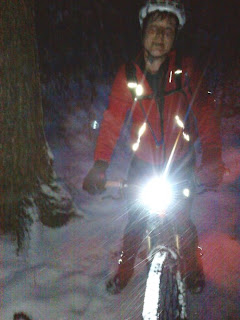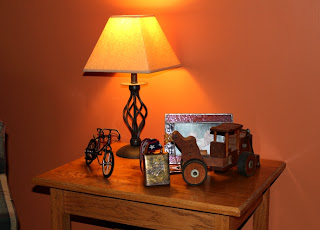 A couple of years ago the GPS input based physical activity tracking and sharing web site Strava came online. Much like Facebook, at first first it seemed to be just another variant on MySpace, or in this case, on the Garmin Connect site or MapMyRide or any of a number of other sites to which you upload your GPS recorded trip data for analysis. There were subtle differences with Strava though, ones that placed it firmly into the social media genre but more importantly, features that added a competitive flair.
A couple of years ago the GPS input based physical activity tracking and sharing web site Strava came online. Much like Facebook, at first first it seemed to be just another variant on MySpace, or in this case, on the Garmin Connect site or MapMyRide or any of a number of other sites to which you upload your GPS recorded trip data for analysis. There were subtle differences with Strava though, ones that placed it firmly into the social media genre but more importantly, features that added a competitive flair.Strava was billed from the beginning as a training application designed to help promote activity and competition and that it did. With some smart targeted marketing, like promoting competitions within the competition at certain races, people quickly saw the features and perceived the benefits. Those benefits were often in the form of self gratification in the form of seeing your ranking on the leader board. The leader board feature, a feature that tracks the best time on a certain segment of terrain, is probably the most distinct functionality of Strava and the one that has given it much of it's success.
You see, a segment as it is called in Strava, is either a categorized climb based on minimum gain/length criteria, which is automatically generated, or a manually entered portion of a route that a user creates and names. In either case, a leader board is maintained as well as complete results for all riders completing that segment. It also ranks you against your previous performance on the segment as well, tracking your top few attempts and giving feedback against those.
Adding the competitive flair is, in my opinion, what has caused Strava to catch on. It is easy and it is anonymous. It makes every ride a race. And that is where the rub can come in, that is, if you let it by taking the whole thing too seriously. We often joke about some of the behavior that the whole Strava segment competition has inspired. The term 'Strava whoring' has come to denote one who goes out on a ride with the sole purpose of obtaining Strava records, or in some cases, a single record. The case of 'Strava sessioning' is where you go and do intervals of a single segment over and over. In many cases this is harmless, such as when people do repeat intervals up a certain hill but some have been known to session a flat or downhill segment just for the glory of their name in lights. I've even heard of people whose entire ride centered around attempting a particular segment, to the point of having their spouse drive them to the segment.
 As with everything, people take it to the extreme case and get way too wrapped up in the details. In terms of the records, they don't really give you the complete and accurate picture, at least not by default. They don't track whether or not it was a solo attempt versus a group ride. They don't track whether you were on a time-trial bike or a tandem vs. a regular road bicycle. They also have no insight into whether or not you were drafting a school bus or motor-pacing behind a scooter with your wife or if their was a 30 mph head or tail wind.
As with everything, people take it to the extreme case and get way too wrapped up in the details. In terms of the records, they don't really give you the complete and accurate picture, at least not by default. They don't track whether or not it was a solo attempt versus a group ride. They don't track whether you were on a time-trial bike or a tandem vs. a regular road bicycle. They also have no insight into whether or not you were drafting a school bus or motor-pacing behind a scooter with your wife or if their was a 30 mph head or tail wind.It also doesn't and can't take into account the fact that GPS units are inherently flaky, both in recording tracks and in recording timing. I can't tell you how many times Cathy has beaten me on a segment by a lot, literally double digit seconds, when we were riding the tandem. She apparently got one of the GPS units with the built in handicapping feature. I've also gone into a segment last, finished it first and still been beaten handily by one of the people in the group when it is uploaded. That said, who cares, really? Yes, it would be nice to compare oneself apples to apples but really, you just want to know if you are doing better or worse than before.
I would like to see some more granularity though in the default reporting. In their defense, Strava offers custom filters for sorting, however the default display behavior is always all entries and all time. I think that a really telling piece information in getting better accuracy for a given segment record is whether or not the attempt was an individual versus team effort is one useful piece of data.
The other thing I would love to see is a default yearly reset on the records where by at the start of the year, they all reset. Sure, keep the historical records as well but make those a filtered display option rather than the default display. I suspect this would actually aid in giving folks extra incentive to hit the segments early in the season, a point in the year where it is often difficult to find motivation.It would also make it easier to filter out abnormal results and give a clear picture of how you really stack up at that particular point in the year. Most historical records are set during the peak of the season, which has little bearing on the current state of the peloton in New England in January.
Strava is a fun social app, much like all of the other social apps. Is it a real training tool? For me, no, it's just a novelty. Do I go a little harder on some rides when I'm doing a known segment, sure and I suppose that for that case, the tool is really aiding in training. Is it getting some folks out there doing more and possibly doing it harder, I'm sure that it is. Is the public nature of the results tracking helping to promote peer encouragement? Sure it is. The fact that people are seeing what you are doing and can give feedback is a good thing. I certainly like the site and use it consistently as do most of my friends. It's a clean, consistent and convenient way to share data and give and receive feedback. I think it does what it set out to do and does it well.
































